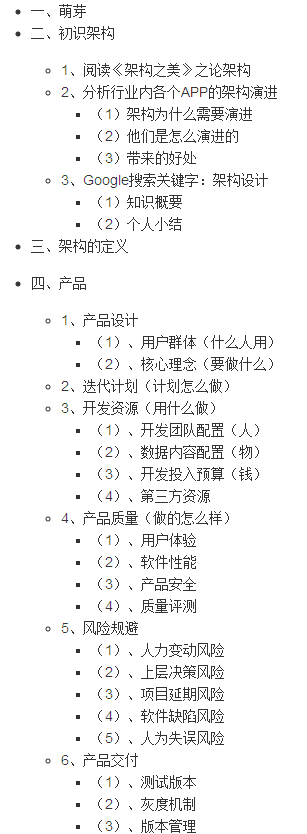我正在写有一个登录视图和主视图,设置像这样一个小AngularJS应用程序:
$routeProvider
.when('/main' , {templateUrl: 'partials/main.html', controller: MainController})
.when('/login', {templateUrl: 'partials/login.html', controller: LoginController})
.otherwise({redirectTo: '/login'});
我的LoginController检查用户名/密码组合,并设置在$ rootScope反映此一属性:
function LoginController($scope, $location, $rootScope) {
$scope.attemptLogin = function() {
if ( $scope.username == $scope.password ) { // test
$rootScope.loggedUser = $scope.username;
$location.path( "/main" );
} else {
$scope.loginError = "Invalid user/pass.";
}
}
一切正常,但如果我访问http://localhost/#/main我最终绕过登录屏幕。 我想写的东西,如“每当路由发生变化,如果$ rootScope.loggedUser为null,则重定向到/登录”
...
......等等。 我可以听路由变化不知何故? 无论如何,我会发布这个问题,并继续寻找。
Answer 1:
通过一些文档和源代码一些跳水之后,我觉得我得到它的工作。 或许,这将是为别人有用吗?
添加以下到我的模块配置:
angular.module(...)
.config( ['$routeProvider', function($routeProvider) {...}] )
.run( function($rootScope, $location) {
// register listener to watch route changes
$rootScope.$on( "$routeChangeStart", function(event, next, current) {
if ( $rootScope.loggedUser == null ) {
// no logged user, we should be going to #login
if ( next.templateUrl != "partials/login.html" ) {
// not going to #login, we should redirect now
$location.path( "/login" );
}
}
});
})
有一两件事似乎奇怪的是,我不得不测试部分名称( login.html ),因为“下一个” Route对象没有一个URL或别的东西。 也许有一个更好的办法?
Answer 2:
下面是可能与“解析”配置属性和“承诺”使上取决于数据路由和路由规则,最终的数据加载更优雅和灵活的解决方案。
您可以在路由配置和功能负荷指定“解析”功能,检查数据,做所有重定向。 如果你需要加载数据,则返回一个承诺,如果你需要做的重定向 - 在这之前拒绝承诺。 所有的细节上可以找到$ routerProvider和$ Q文档页面。
'use strict';
var app = angular.module('app', [])
.config(['$routeProvider', function($routeProvider) {
$routeProvider
.when('/', {
templateUrl: "login.html",
controller: LoginController
})
.when('/private', {
templateUrl: "private.html",
controller: PrivateController,
resolve: {
factory: checkRouting
}
})
.when('/private/anotherpage', {
templateUrl:"another-private.html",
controller: AnotherPriveController,
resolve: {
factory: checkRouting
}
})
.otherwise({ redirectTo: '/' });
}]);
var checkRouting= function ($q, $rootScope, $location) {
if ($rootScope.userProfile) {
return true;
} else {
var deferred = $q.defer();
$http.post("/loadUserProfile", { userToken: "blah" })
.success(function (response) {
$rootScope.userProfile = response.userProfile;
deferred.resolve(true);
})
.error(function () {
deferred.reject();
$location.path("/");
});
return deferred.promise;
}
};
对于讲俄语的人有一对HABR邮报“ 在angularjs选项条件rautinga 。”
Answer 3:
我一直在努力这样做。 想出了与同事的工作后,另一个更简单的解决方案。 我有一个表建立在$location.path() 。 这是卓有成效的。 我刚开始学习AngularJS并觉得这是更清洁和可读性。
$scope.$watch(function() { return $location.path(); }, function(newValue, oldValue){
if ($scope.loggedIn == false && newValue != '/login'){
$location.path('/login');
}
});
Answer 4:
实现登录重定向以不同的方式是使用事件和拦截器作为这里描述 。 文章描述了如当需要登录检测,排队请求,并重放它们一旦登录成功一些额外的优点。
你可以尝试了工作演示在这里和观看演示源在这里 。
Answer 5:
1.设置全局当前用户。
在您的身份验证服务,设置根范围内的当前身份验证的用户。
// AuthService.js
// auth successful
$rootScope.user = user
每个受保护的航线上2.设置身份验证功能。
// AdminController.js
.config(function ($routeProvider) {
$routeProvider.when('/admin', {
controller: 'AdminController',
auth: function (user) {
return user && user.isAdmin
}
})
})
3.检查每个路由改变身份验证。
// index.js
.run(function ($rootScope, $location) {
$rootScope.$on('$routeChangeStart', function (ev, next, curr) {
if (next.$$route) {
var user = $rootScope.user
var auth = next.$$route.auth
if (auth && !auth(user)) { $location.path('/') }
}
})
})
或者,也可以在用户对象上设置权限和分配给每个路线的许可,然后检查事件回调的权限。
Answer 6:
以下是我做的,如果它可以帮助任何人:
在配置,我设置了publicAccess上,我想向公众开放(如登录或注册)的几条路线属性:
$routeProvider
.when('/', {
templateUrl: 'views/home.html',
controller: 'HomeCtrl'
})
.when('/login', {
templateUrl: 'views/login.html',
controller: 'LoginCtrl',
publicAccess: true
})
然后在运行块,我设置的一个听众$routeChangeStart重定向到事件'/login' ,除非用户具有访问权限或者路由不公开访问:
angular.module('myModule').run(function($rootScope, $location, user, $route) {
var routesOpenToPublic = [];
angular.forEach($route.routes, function(route, path) {
// push route onto routesOpenToPublic if it has a truthy publicAccess value
route.publicAccess && (routesOpenToPublic.push(path));
});
$rootScope.$on('$routeChangeStart', function(event, nextLoc, currentLoc) {
var closedToPublic = (-1 === routesOpenToPublic.indexOf($location.path()));
if(closedToPublic && !user.isLoggedIn()) {
$location.path('/login');
}
});
})
您可以在状态发生明显变化,从isLoggedIn到别的...只是展示另一种方式来做到这一点。
Answer 7:
我使用拦截器做。 我创建了可以添加到index.html文件库文件。 这样,您将有全球性的错误处理为您的休息服务电话和不必单独关心的所有错误。 再往下,我也贴我的基本认证登录库。 在那里,你可以看到,我也检查了401错误和重定向到一个不同的位置。 见LIB / EA-基本认证 - login.js
LIB / HTTP的错误handling.js
/**
* @ngdoc overview
* @name http-error-handling
* @description
*
* Module that provides http error handling for apps.
*
* Usage:
* Hook the file in to your index.html: <script src="lib/http-error-handling.js"></script>
* Add <div class="messagesList" app-messages></div> to the index.html at the position you want to
* display the error messages.
*/
(function() {
'use strict';
angular.module('http-error-handling', [])
.config(function($provide, $httpProvider, $compileProvider) {
var elementsList = $();
var showMessage = function(content, cl, time) {
$('<div/>')
.addClass(cl)
.hide()
.fadeIn('fast')
.delay(time)
.fadeOut('fast', function() { $(this).remove(); })
.appendTo(elementsList)
.text(content);
};
$httpProvider.responseInterceptors.push(function($timeout, $q) {
return function(promise) {
return promise.then(function(successResponse) {
if (successResponse.config.method.toUpperCase() != 'GET')
showMessage('Success', 'http-success-message', 5000);
return successResponse;
}, function(errorResponse) {
switch (errorResponse.status) {
case 400:
showMessage(errorResponse.data.message, 'http-error-message', 6000);
}
}
break;
case 401:
showMessage('Wrong email or password', 'http-error-message', 6000);
break;
case 403:
showMessage('You don\'t have the right to do this', 'http-error-message', 6000);
break;
case 500:
showMessage('Server internal error: ' + errorResponse.data.message, 'http-error-message', 6000);
break;
default:
showMessage('Error ' + errorResponse.status + ': ' + errorResponse.data.message, 'http-error-message', 6000);
}
return $q.reject(errorResponse);
});
};
});
$compileProvider.directive('httpErrorMessages', function() {
return {
link: function(scope, element, attrs) {
elementsList.push($(element));
}
};
});
});
})();
CSS / HTTP的错误handling.css
.http-error-message {
background-color: #fbbcb1;
border: 1px #e92d0c solid;
font-size: 12px;
font-family: arial;
padding: 10px;
width: 702px;
margin-bottom: 1px;
}
.http-error-validation-message {
background-color: #fbbcb1;
border: 1px #e92d0c solid;
font-size: 12px;
font-family: arial;
padding: 10px;
width: 702px;
margin-bottom: 1px;
}
http-success-message {
background-color: #adfa9e;
border: 1px #25ae09 solid;
font-size: 12px;
font-family: arial;
padding: 10px;
width: 702px;
margin-bottom: 1px;
}
的index.html
<!doctype html>
<html lang="en" ng-app="cc">
<head>
<meta charset="utf-8">
<title>yourapp</title>
<link rel="stylesheet" href="css/http-error-handling.css"/>
</head>
<body>
<!-- Display top tab menu -->
<ul class="menu">
<li><a href="#/user">Users</a></li>
<li><a href="#/vendor">Vendors</a></li>
<li><logout-link/></li>
</ul>
<!-- Display errors -->
<div class="http-error-messages" http-error-messages></div>
<!-- Display partial pages -->
<div ng-view></div>
<!-- Include all the js files. In production use min.js should be used -->
<script src="lib/angular114/angular.js"></script>
<script src="lib/angular114/angular-resource.js"></script>
<script src="lib/http-error-handling.js"></script>
<script src="js/app.js"></script>
<script src="js/services.js"></script>
<script src="js/controllers.js"></script>
<script src="js/filters.js"></script>
LIB / EA-基本认证- login.js
几乎同样可以登录来完成。 在这里,你有答案的重定向($ location.path(“/登录”))。
/**
* @ngdoc overview
* @name ea-basic-auth-login
* @description
*
* Module that provides http basic authentication for apps.
*
* Usage:
* Hook the file in to your index.html: <script src="lib/ea-basic-auth-login.js"> </script>
* Place <ea-login-form/> tag in to your html login page
* Place <ea-logout-link/> tag in to your html page where the user has to click to logout
*/
(function() {
'use strict';
angular.module('ea-basic-auth-login', ['ea-base64-login'])
.config(['$httpProvider', function ($httpProvider) {
var ea_basic_auth_login_interceptor = ['$location', '$q', function($location, $q) {
function success(response) {
return response;
}
function error(response) {
if(response.status === 401) {
$location.path('/login');
return $q.reject(response);
}
else {
return $q.reject(response);
}
}
return function(promise) {
return promise.then(success, error);
}
}];
$httpProvider.responseInterceptors.push(ea_basic_auth_login_interceptor);
}])
.controller('EALoginCtrl', ['$scope','$http','$location','EABase64Login', function($scope, $http, $location, EABase64Login) {
$scope.login = function() {
$http.defaults.headers.common['Authorization'] = 'Basic ' + EABase64Login.encode($scope.email + ':' + $scope.password);
$location.path("/user");
};
$scope.logout = function() {
$http.defaults.headers.common['Authorization'] = undefined;
$location.path("/login");
};
}])
.directive('eaLoginForm', [function() {
return {
restrict: 'E',
template: '<div id="ea_login_container" ng-controller="EALoginCtrl">' +
'<form id="ea_login_form" name="ea_login_form" novalidate>' +
'<input id="ea_login_email_field" class="ea_login_field" type="text" name="email" ng-model="email" placeholder="E-Mail"/>' +
'<br/>' +
'<input id="ea_login_password_field" class="ea_login_field" type="password" name="password" ng-model="password" placeholder="Password"/>' +
'<br/>' +
'<button class="ea_login_button" ng-click="login()">Login</button>' +
'</form>' +
'</div>',
replace: true
};
}])
.directive('eaLogoutLink', [function() {
return {
restrict: 'E',
template: '<a id="ea-logout-link" ng-controller="EALoginCtrl" ng-click="logout()">Logout</a>',
replace: true
}
}]);
angular.module('ea-base64-login', []).
factory('EABase64Login', function() {
var keyStr = 'ABCDEFGHIJKLMNOP' +
'QRSTUVWXYZabcdef' +
'ghijklmnopqrstuv' +
'wxyz0123456789+/' +
'=';
return {
encode: function (input) {
var output = "";
var chr1, chr2, chr3 = "";
var enc1, enc2, enc3, enc4 = "";
var i = 0;
do {
chr1 = input.charCodeAt(i++);
chr2 = input.charCodeAt(i++);
chr3 = input.charCodeAt(i++);
enc1 = chr1 >> 2;
enc2 = ((chr1 & 3) << 4) | (chr2 >> 4);
enc3 = ((chr2 & 15) << 2) | (chr3 >> 6);
enc4 = chr3 & 63;
if (isNaN(chr2)) {
enc3 = enc4 = 64;
} else if (isNaN(chr3)) {
enc4 = 64;
}
output = output +
keyStr.charAt(enc1) +
keyStr.charAt(enc2) +
keyStr.charAt(enc3) +
keyStr.charAt(enc4);
chr1 = chr2 = chr3 = "";
enc1 = enc2 = enc3 = enc4 = "";
} while (i < input.length);
return output;
},
decode: function (input) {
var output = "";
var chr1, chr2, chr3 = "";
var enc1, enc2, enc3, enc4 = "";
var i = 0;
// remove all characters that are not A-Z, a-z, 0-9, +, /, or =
var base64test = /[^A-Za-z0-9\+\/\=]/g;
if (base64test.exec(input)) {
alert("There were invalid base64 characters in the input text.\n" +
"Valid base64 characters are A-Z, a-z, 0-9, '+', '/',and '='\n" +
"Expect errors in decoding.");
}
input = input.replace(/[^A-Za-z0-9\+\/\=]/g, "");
do {
enc1 = keyStr.indexOf(input.charAt(i++));
enc2 = keyStr.indexOf(input.charAt(i++));
enc3 = keyStr.indexOf(input.charAt(i++));
enc4 = keyStr.indexOf(input.charAt(i++));
chr1 = (enc1 << 2) | (enc2 >> 4);
chr2 = ((enc2 & 15) << 4) | (enc3 >> 2);
chr3 = ((enc3 & 3) << 6) | enc4;
output = output + String.fromCharCode(chr1);
if (enc3 != 64) {
output = output + String.fromCharCode(chr2);
}
if (enc4 != 64) {
output = output + String.fromCharCode(chr3);
}
chr1 = chr2 = chr3 = "";
enc1 = enc2 = enc3 = enc4 = "";
} while (i < input.length);
return output;
}
};
});
})();
Answer 8:
在您的app.js文件:
.run(["$rootScope", "$state", function($rootScope, $state) {
$rootScope.$on('$locationChangeStart', function(event, next, current) {
if (!$rootScope.loggedUser == null) {
$state.go('home');
}
});
}])
Answer 9:
这是可能的重定向到另一个视图的角度-UI-路由器 。 为此,我们有方法$state.go("target_view") 例如:
---- app.js -----
var app = angular.module('myApp', ['ui.router']);
app.config(function ($stateProvider, $urlRouterProvider) {
// Otherwise
$urlRouterProvider.otherwise("/");
$stateProvider
// Index will decide if redirects to Login or Dashboard view
.state("index", {
url: ""
controller: 'index_controller'
})
.state('dashboard', {
url: "/dashboard",
controller: 'dashboard_controller',
templateUrl: "views/dashboard.html"
})
.state('login', {
url: "/login",
controller: 'login_controller',
templateUrl: "views/login.html"
});
});
// Associate the $state variable with $rootScope in order to use it with any controller
app.run(function ($rootScope, $state, $stateParams) {
$rootScope.$state = $state;
$rootScope.$stateParams = $stateParams;
});
app.controller('index_controller', function ($scope, $log) {
/* Check if the user is logged prior to use the next code */
if (!isLoggedUser) {
$log.log("user not logged, redirecting to Login view");
// Redirect to Login view
$scope.$state.go("login");
} else {
// Redirect to dashboard view
$scope.$state.go("dashboard");
}
});
----- HTML -----
<!DOCTYPE html>
<html>
<head>
<title>My WebSite</title>
<meta charset="utf-8">
<meta http-equiv="X-UA-Compatible" content="IE=edge,chrome=1">
<meta name="description" content="MyContent">
<meta name="viewport" content="width=device-width, initial-scale=1">
<script src="js/libs/angular.min.js" type="text/javascript"></script>
<script src="js/libs/angular-ui-router.min.js" type="text/javascript"></script>
<script src="js/app.js" type="text/javascript"></script>
</head>
<body ng-app="myApp">
<div ui-view></div>
</body>
</html>
Answer 10:
如果你不希望使用的角度,用户界面的路由器,但是想有你的控制器通过懒加载RequireJS,有几个与事件的问题$routeChangeStart使用控制器时为RequireJS模块(延迟加载)。
你不能确定之前,控制器将被载入$routeChangeStart被触发-事实上,它不会被加载。 这意味着你无法访问的特性next航路locals或$$route ,因为他们还没有设置。
例:
app.config(["$routeProvider", function($routeProvider) {
$routeProvider.when("/foo", {
controller: "Foo",
resolve: {
controller: ["$q", function($q) {
var deferred = $q.defer();
require(["path/to/controller/Foo"], function(Foo) {
// now controller is loaded
deferred.resolve();
});
return deferred.promise;
}]
}
});
}]);
app.run(["$rootScope", function($rootScope) {
$rootScope.$on("$routeChangeStart", function(event, next, current) {
console.log(next.$$route, next.locals); // undefined, undefined
});
}]);
这意味着你不能签在那里访问权限。
解:
作为控制器的负载是通过决心做,你可以做同样的你的访问控制检查:
app.config(["$routeProvider", function($routeProvider) {
$routeProvider.when("/foo", {
controller: "Foo",
resolve: {
controller: ["$q", function($q) {
var deferred = $q.defer();
require(["path/to/controller/Foo"], function(Foo) {
// now controller is loaded
deferred.resolve();
});
return deferred.promise;
}],
access: ["$q", function($q) {
var deferred = $q.defer();
if (/* some logic to determine access is granted */) {
deferred.resolve();
} else {
deferred.reject("You have no access rights to go there");
}
return deferred.promise;
}],
}
});
}]);
app.run(["$rootScope", function($rootScope) {
$rootScope.$on("$routeChangeError", function(event, next, current, error) {
console.log("Error: " + error); // "Error: You have no access rights to go there"
});
}]);
这里注意,而不是使用事件$routeChangeStart我使用$routeChangeError
Answer 11:
$routeProvider
.when('/main' , {templateUrl: 'partials/main.html', controller: MainController})
.when('/login', {templateUrl: 'partials/login.html', controller: LoginController}).
.when('/login', {templateUrl: 'partials/index.html', controller: IndexController})
.otherwise({redirectTo: '/index'});
文章来源: Redirecting to a certain route based on condition



